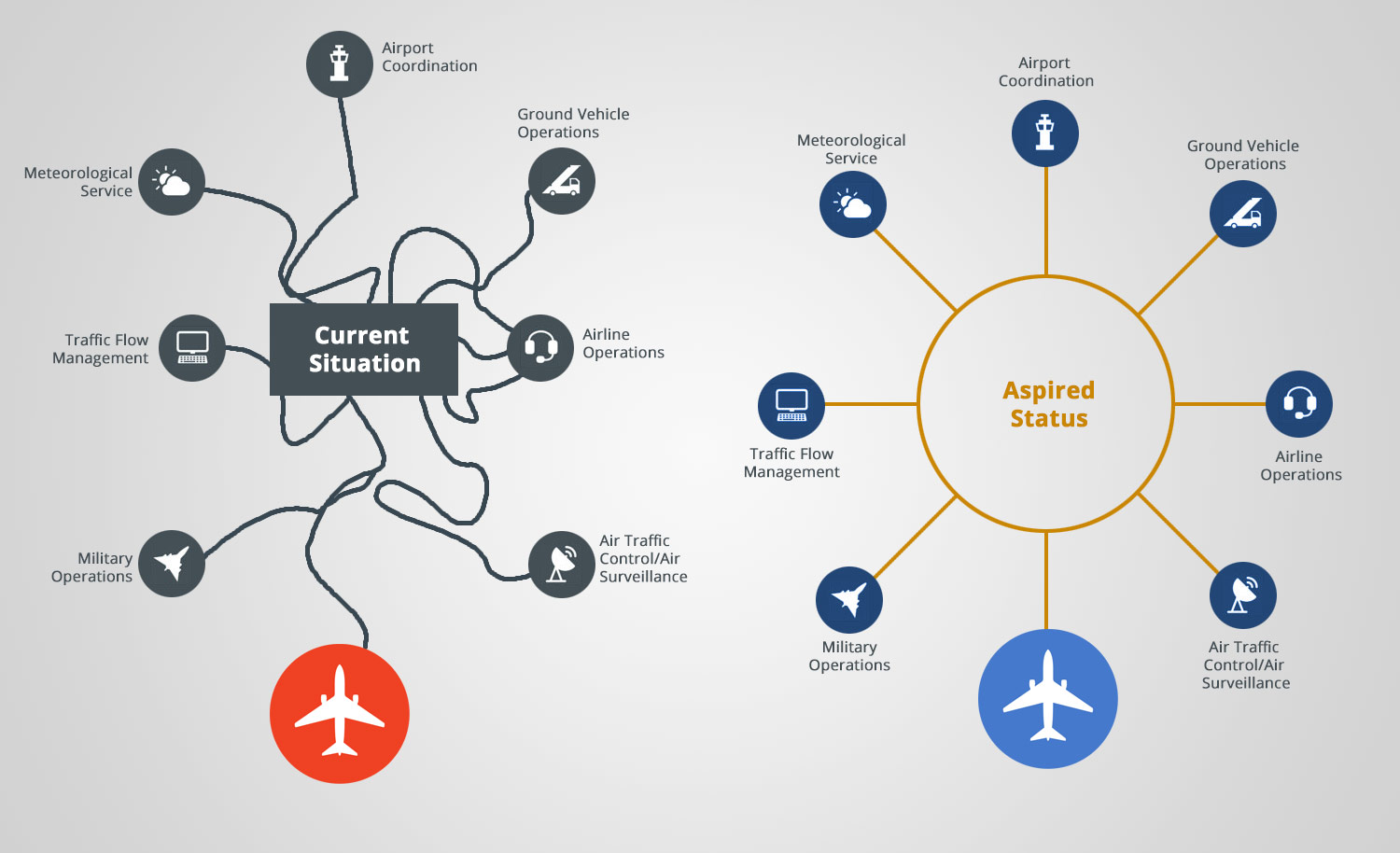The aerospace industry has always been a keen adopter of disruptive technologies – from an earlier era of wireless radios to modern-day turbojet engines, gyroscopic instruments and GPS systems, aviation companies have always been at the forefront of integrating latest ideas into their design and manufacturing processes.
Internet of things (IoT) is one such transformational idea which will have significant impact on aerospace in the near future. With tens of billions of connected devices communicating with each other in future, aviation companies will be able to leverage the growing IoT trend and the power of Big Data to achieve endless benefits; which include, optimized fleet operations, better fuel economy, excellent safety and security standards, and even, autonomous unmanned commercial aircraft.
Thanks to IoT, enormous possibilities exist in the realm of improved customer engagement for airlines with greater personalization, passenger comfort, crew cabin facilities, and in-flight entertainment.
So, how is this new era of connected things for aviation going to shape up in the near term?
Let’s start with the basics. As per a definitive IoT model, aircraft data is already being collected from various devices (e.g. transponders and engines) and transmitted through the network to cloud services, which means real-time operational intelligence drives productivity and reliability improvements. Communication happens through avionics receivers, Aircraft Communications Addressing and Reporting System (ACARS) link and in-flight
Challenges in IoT adoption
At the moment, however, there is no single owner who can control the entire system or solution in commercial aviation. This is because an aircraft and all its associated ground repair & maintenance facilities systems are directly being managed by individual airlines, who don’t always have access to technologies that can translate Big Data into meaningful, long-term savings.
Such an environment with multiple owners and tenants makes it extremely difficult to implement the advantageous concepts of IoT. In spite of the traditional nature of commercial aviation, the following two examples demonstrate the concept of IoT in aviation:
1. IoT system based on open architecture.
2. IoT-based system for operations of individual devices in aerospace.
Solution Example – System Wide Information Management (SWIM)

System Wide Information Management (SWIM) is the one such initiative designed by the FAA, on which one or more Cloud-based services can be implemented. SWIM collates all kinds of data including aircraft maneuvers, routine flight paths, coordination of takeoff and landing, weather statistics, and functional data about aircraft and airports. The open architecture framework of a cloud-based service permits system users to benefit from those new services. By linking data from various sources, additional benefits can be provided. For example, aircrafts running into instability can convey their information through SWIM to allow other airspace users to avoid that situation.
With mechanisms like these, data can be shared more efficiently across all aviation partners. This is accomplished through features like:
- Connection among various data systems so that users can access multiple systems with a single connection.
- Decoding data from different systems into a standard data format so that it can support collaboration among industries and government.
- Providing related to weather and flight planning that will enable airline correspondents and traffic managers to co-operate on the routing and rerouting of traffic based on real-time information like current traffic management initiatives and airport runway configurations.
- The SWIM Terminal Data Distribution System can decode the data into standard format, so that airlines can use this information to streamline surface operations.
- Provides data access to traffic flow information to the subscribers of Aircraft Situation Display to Industry (ASDI).
- Converting flight data into an easily accessible format by providing it in the form of general messages.
- Various information like estimated time of arrival, scheduled time of arrival can help in better navigation planning.
Conclusion
eInfochips has extensive experience in designing smart IoT solutions for aerospace companies, e.g. integrating Brillo and Weave.
Operating individual devices using IoT in aerospace segment, has tons of challenges in aircraft type certificate which means that devices within the aircraft have to be certified for safety, typically following the DO-178 standard for software, and DO-274 for hardware. These requirements mean that development of IoT in aerospace is necessarily more complex than for similar consumer devices, but they can still profit from the opportunity and efficiencies that IoT enables. To address some of these challenges, systems like the Runway Overrun Awareness and Alerting System (ROAAS) can be implemented, enhancing safety and operational efficiency.
It is required to ensure that safety critical flight systems or networks are not connected to devices through internet to protect them from malicious cyber attacks. The availability of bandwidth is a crucial factor for this opportunity to be implemented.
To share your ideas, and know more on eInfochips IoT capabilities in aerospace, write us at marketing@einfochips.com













